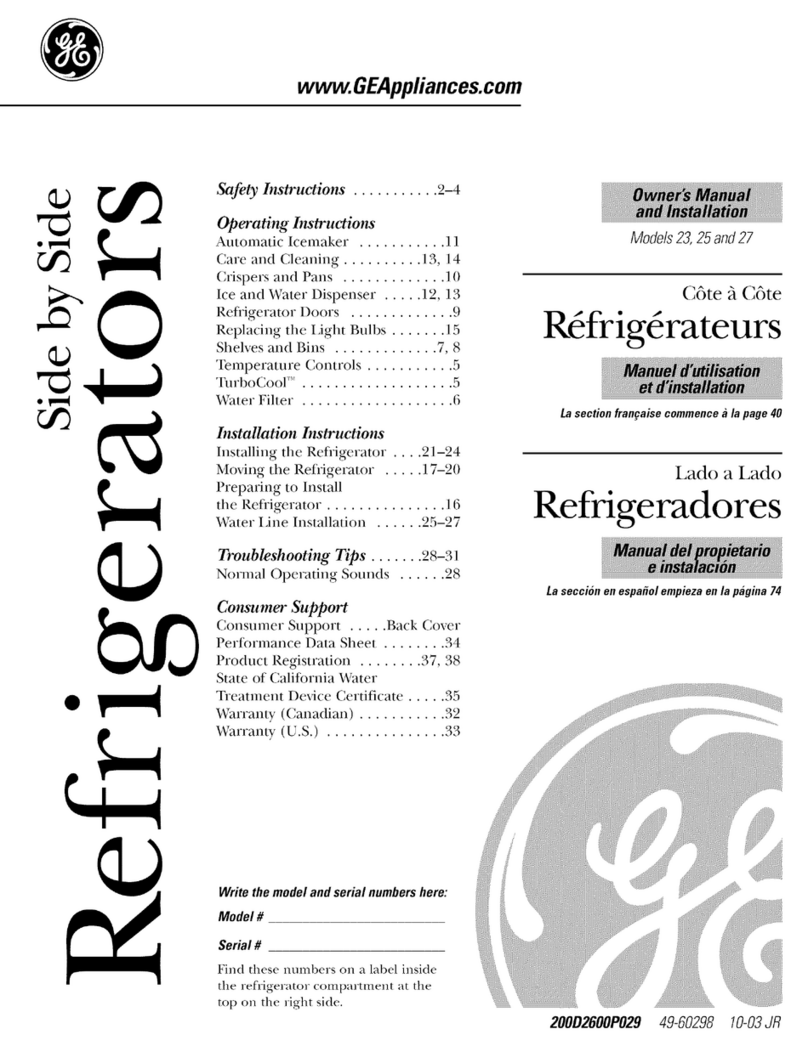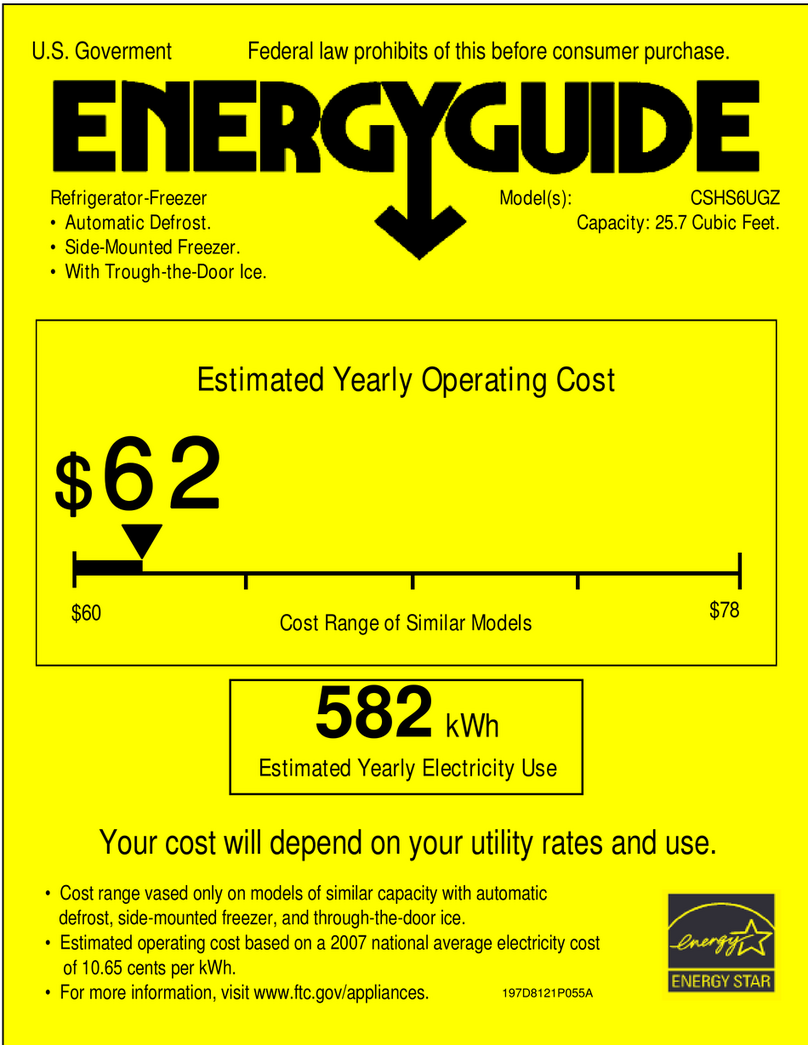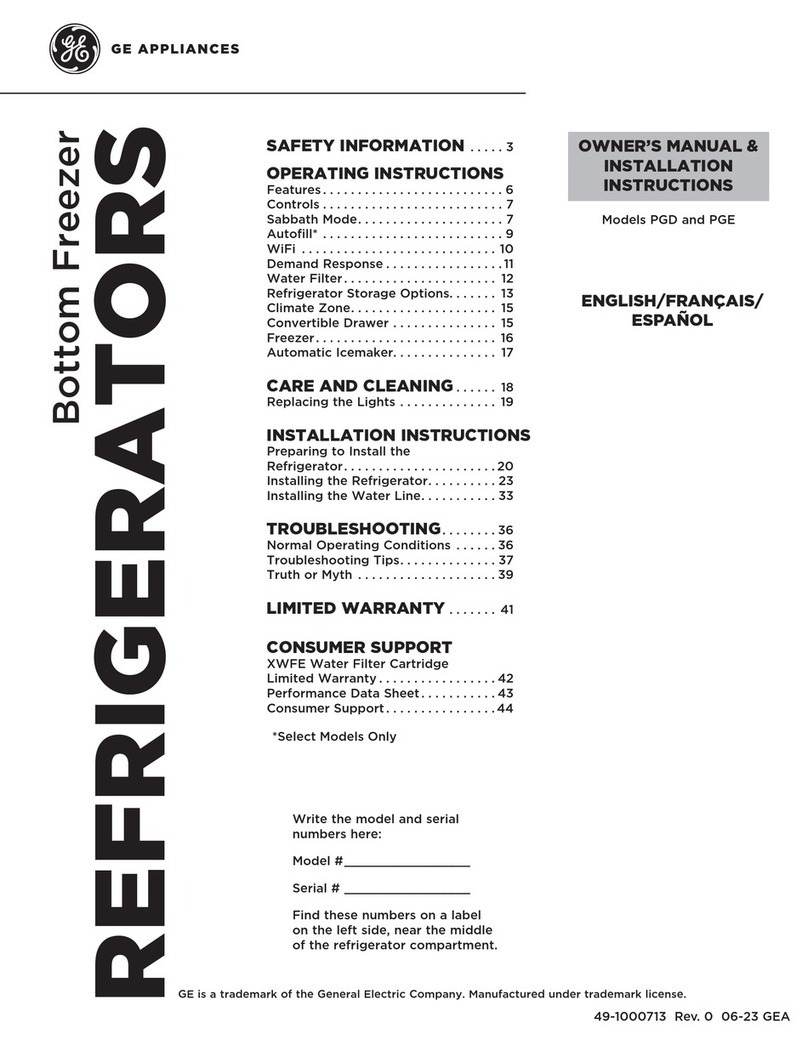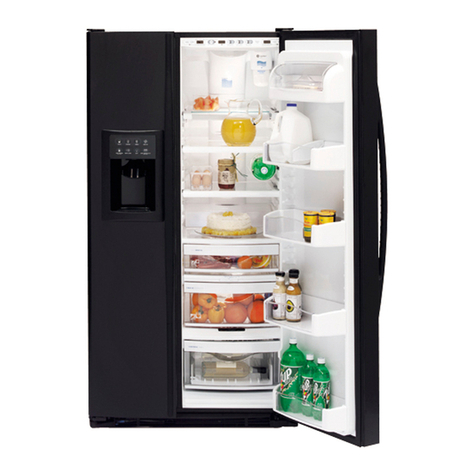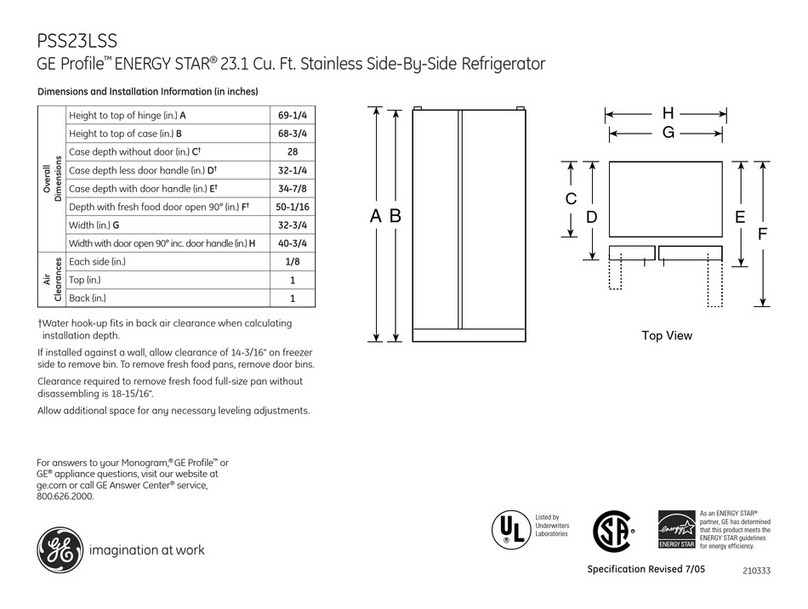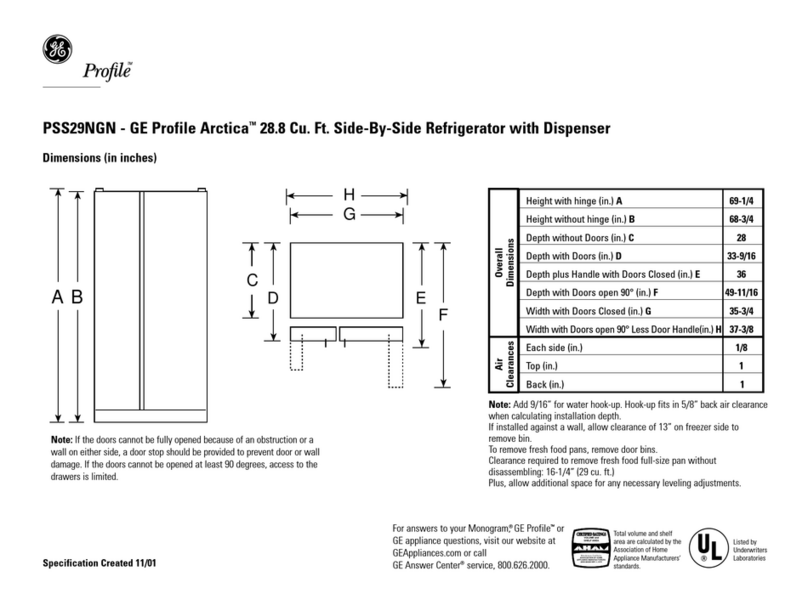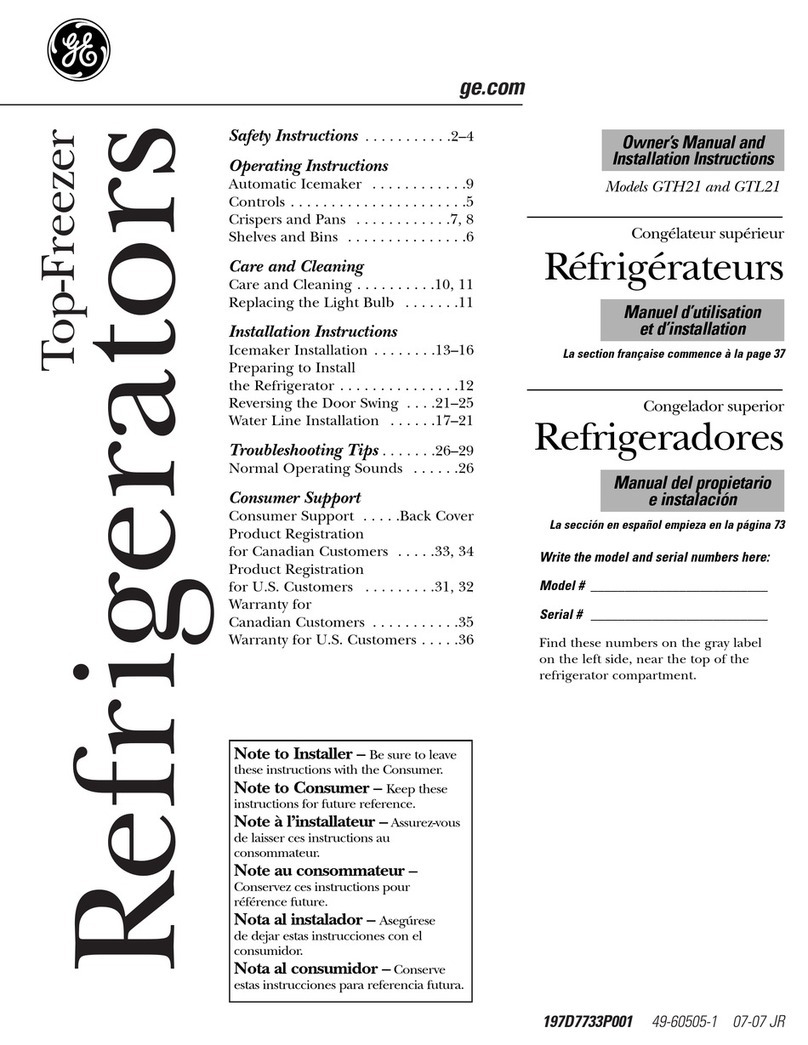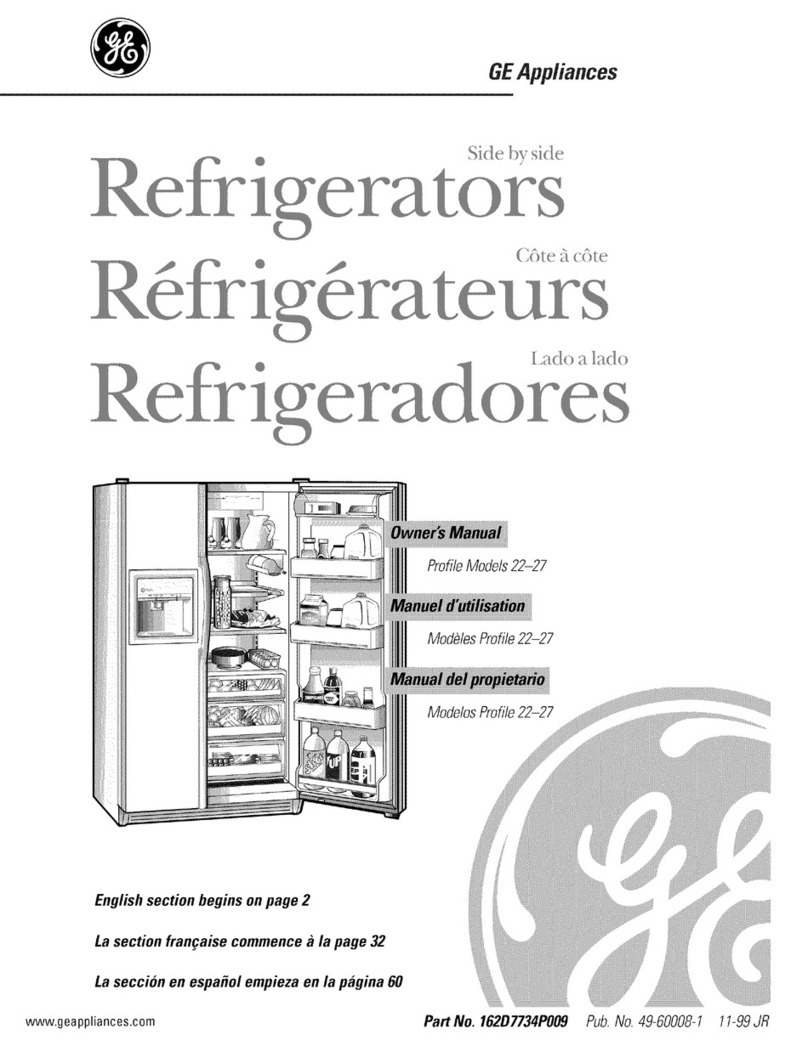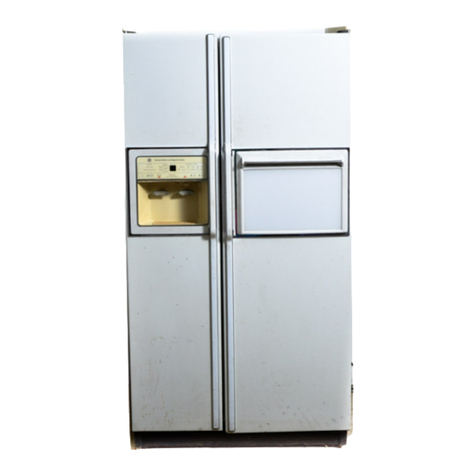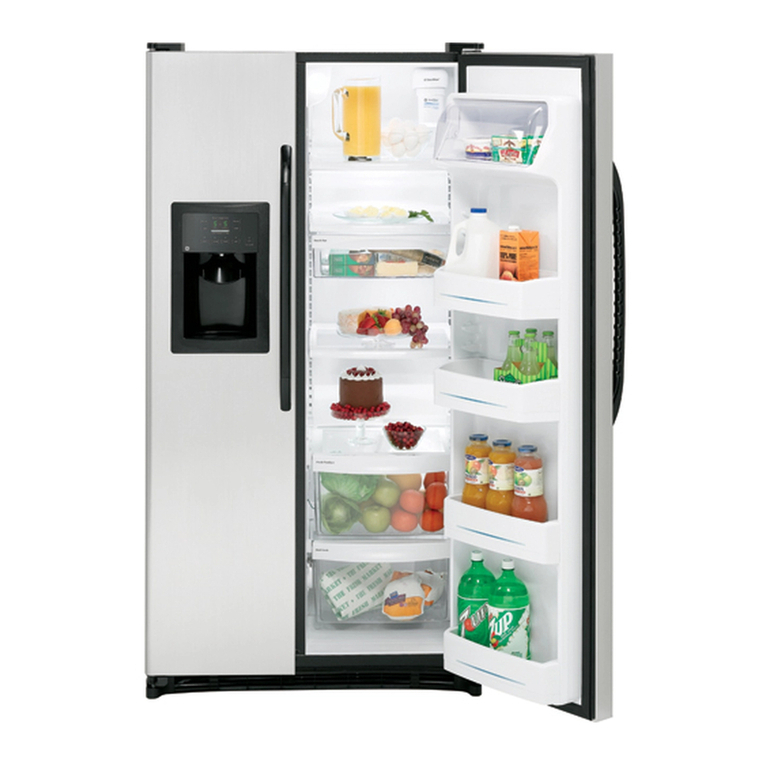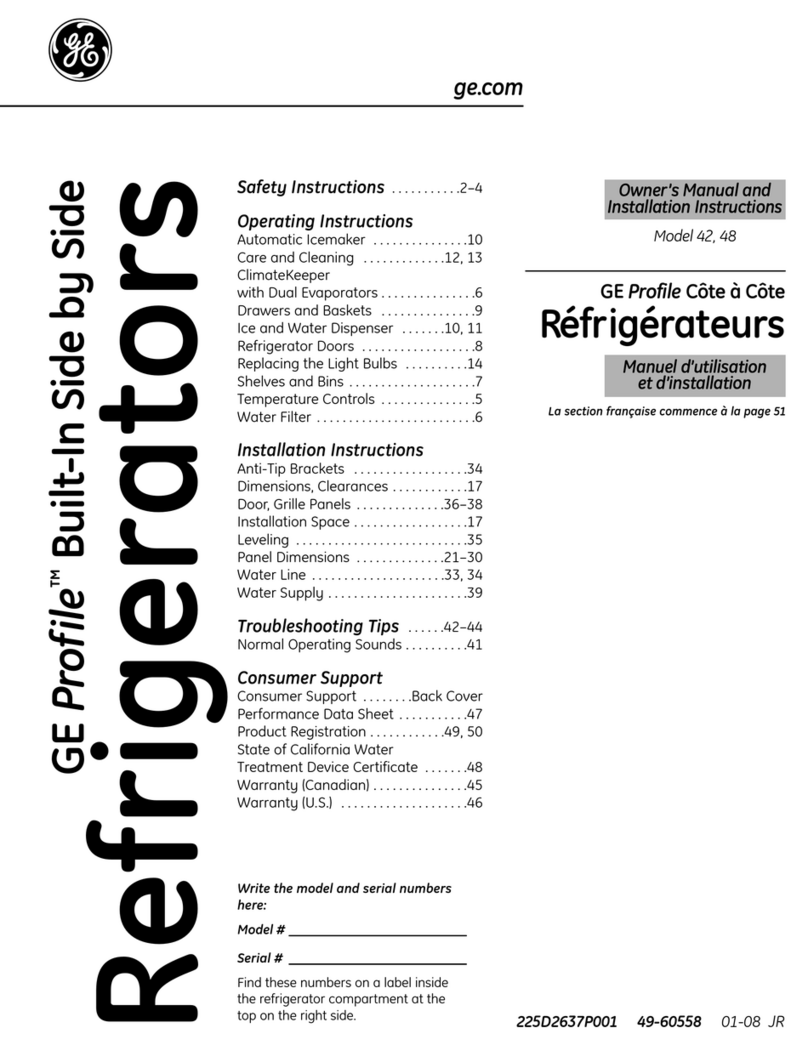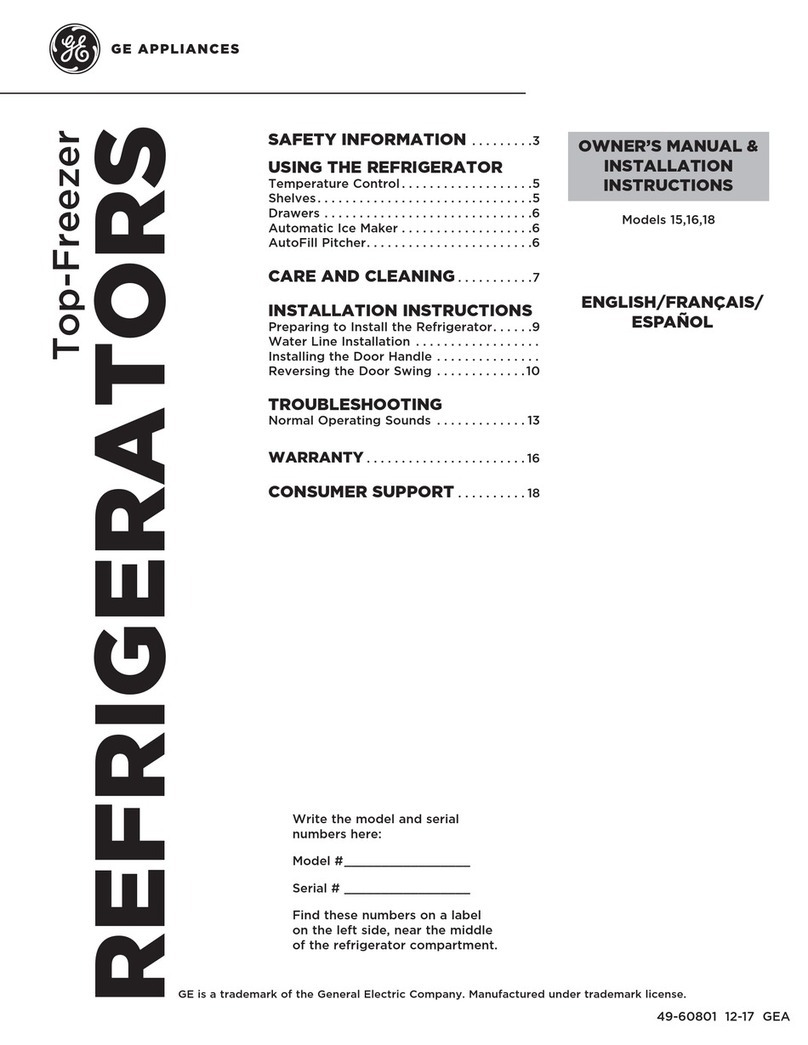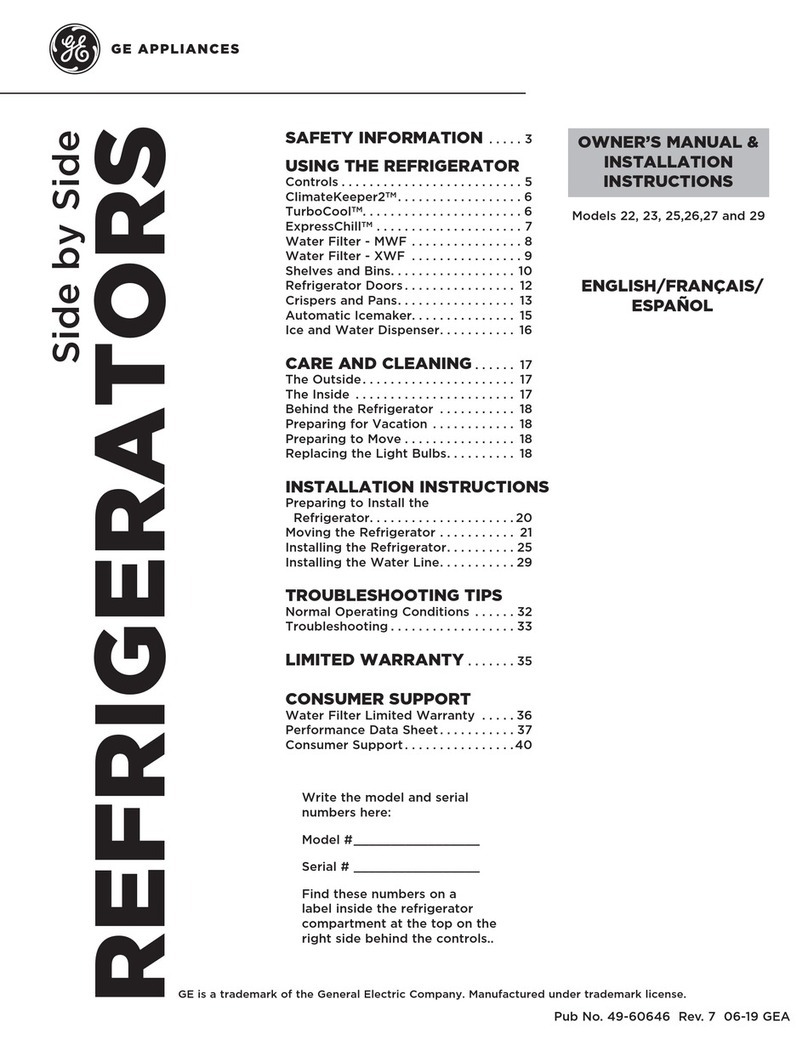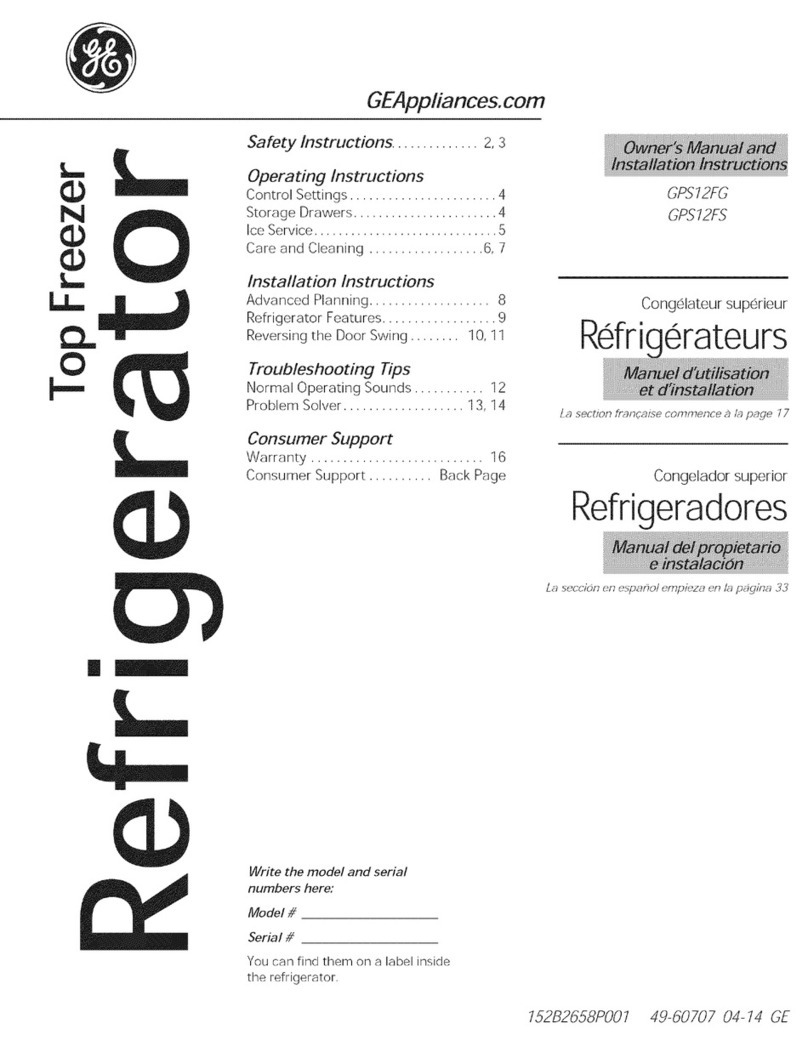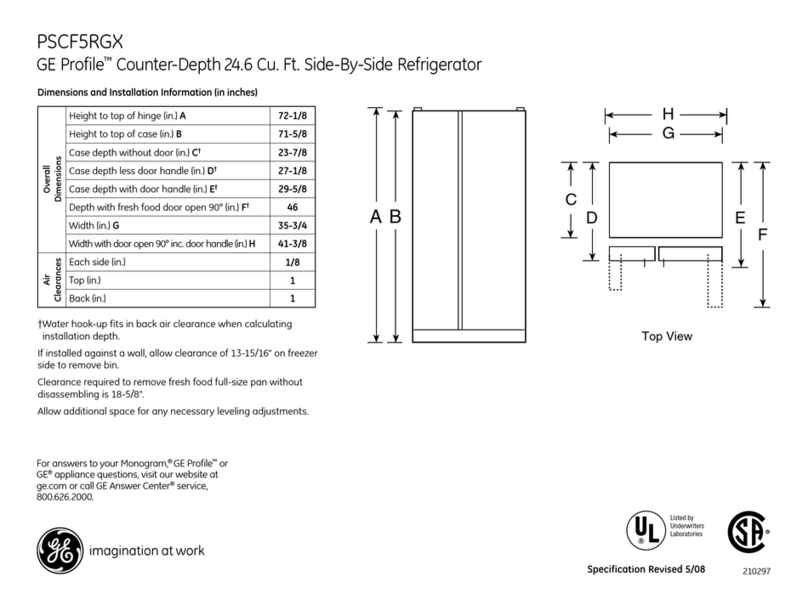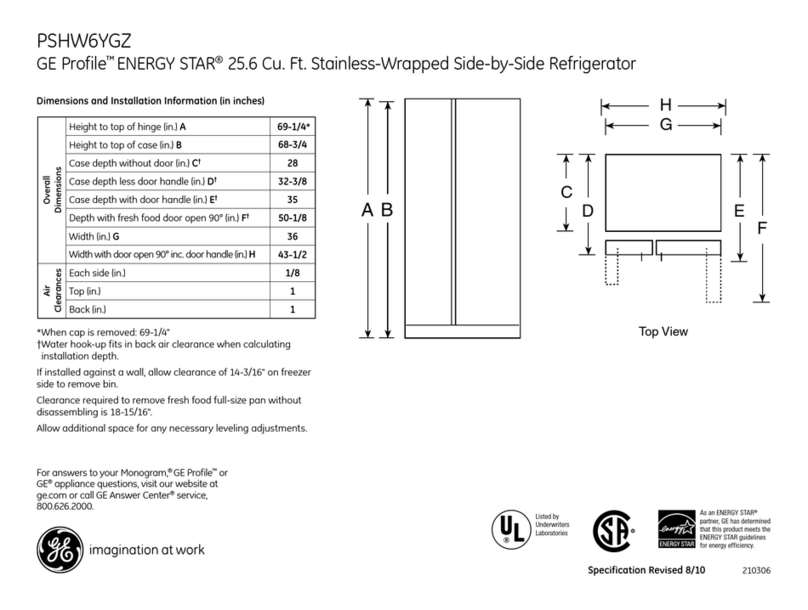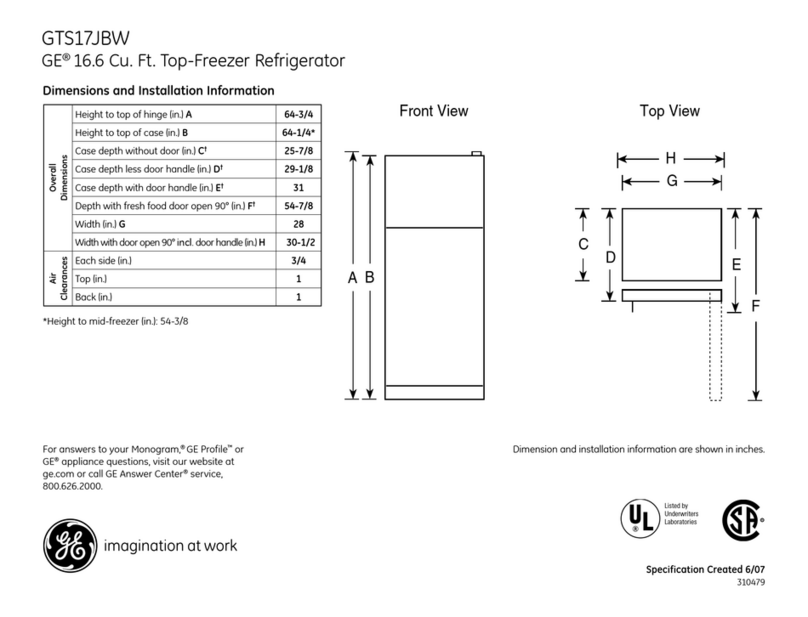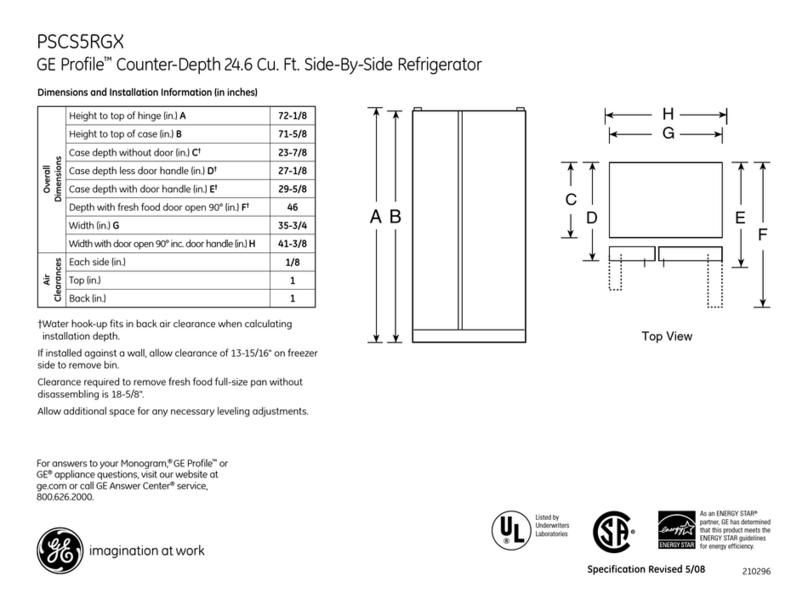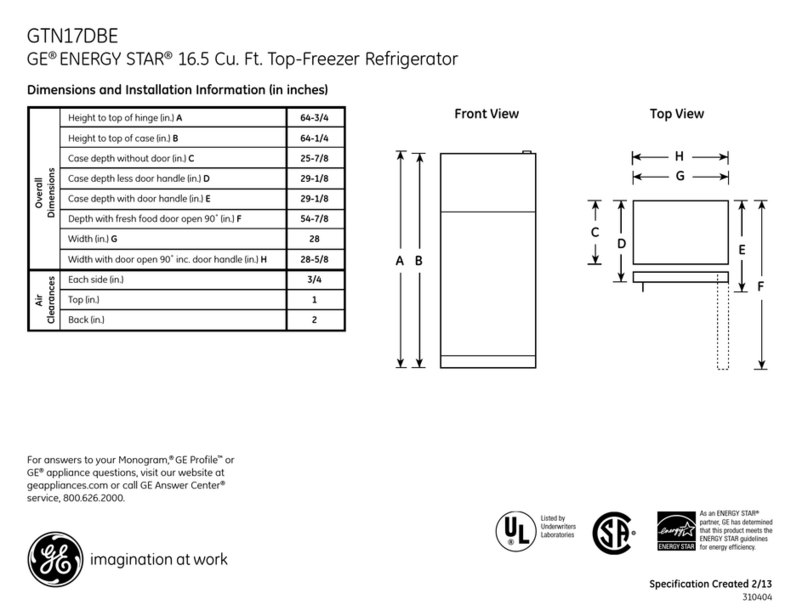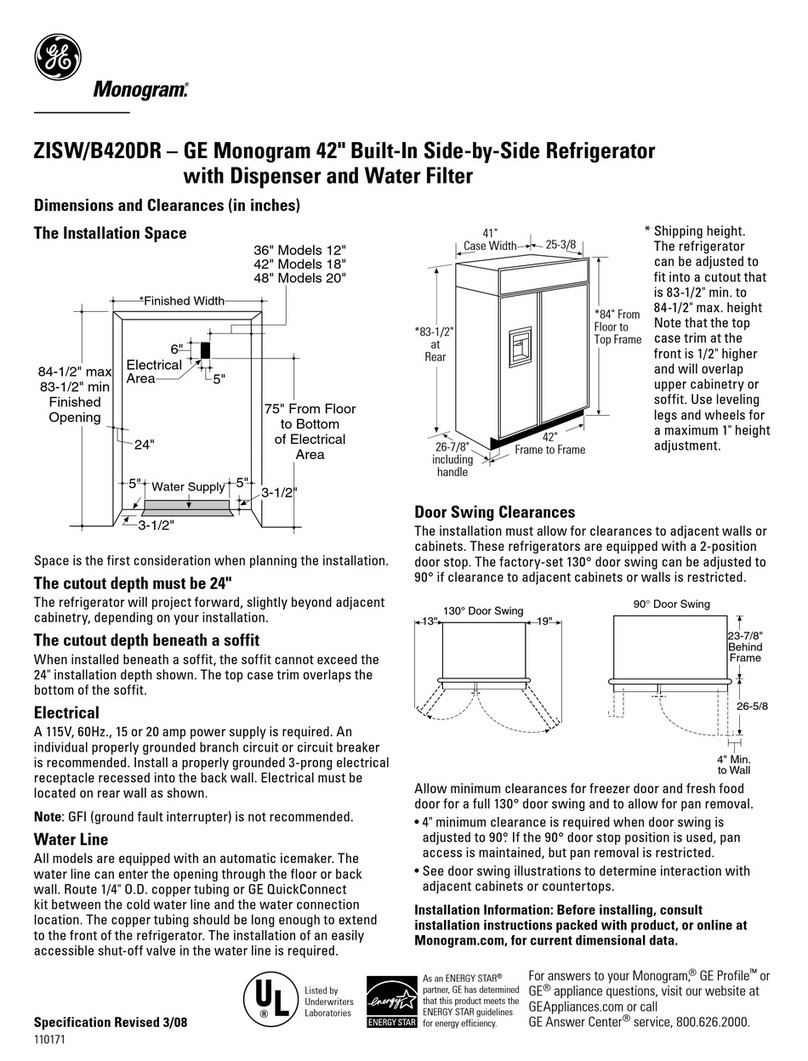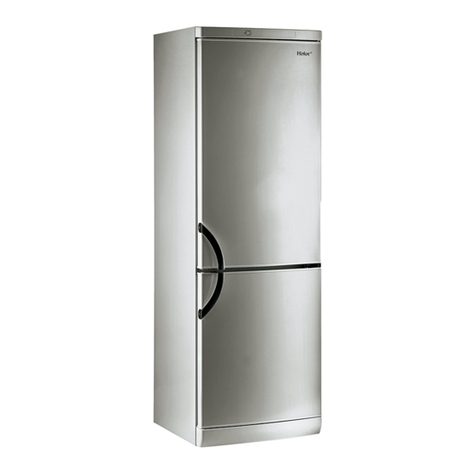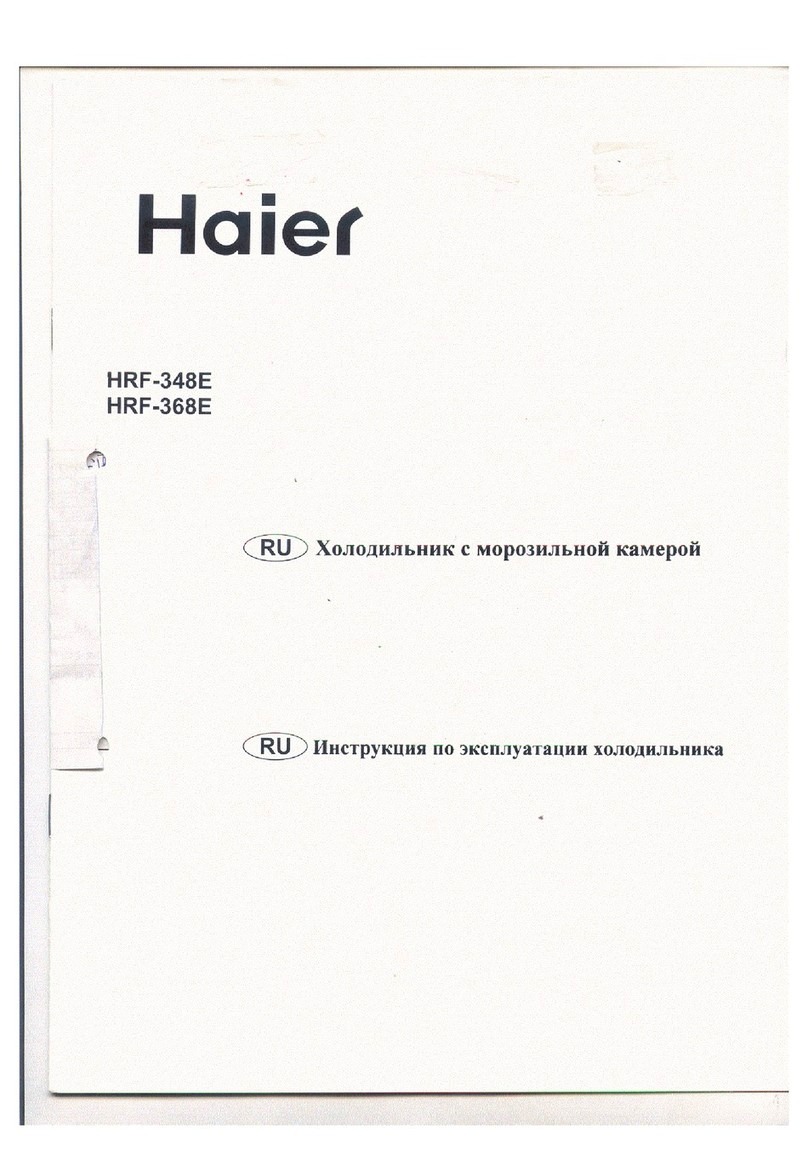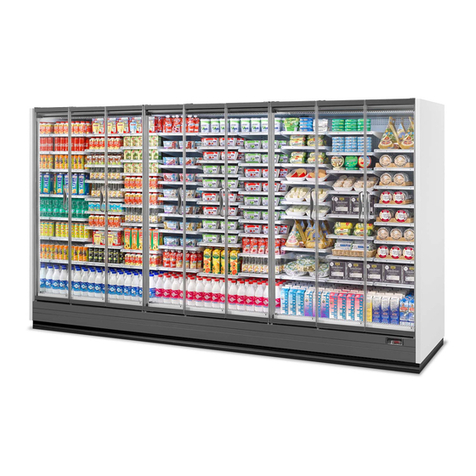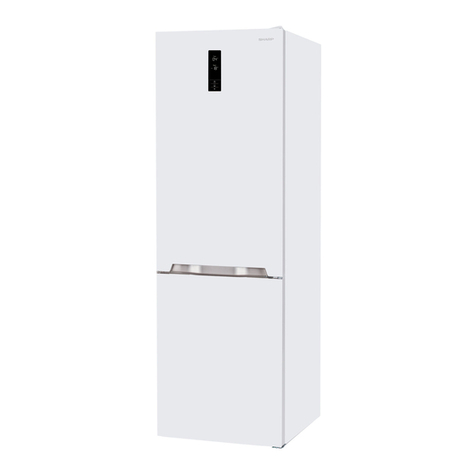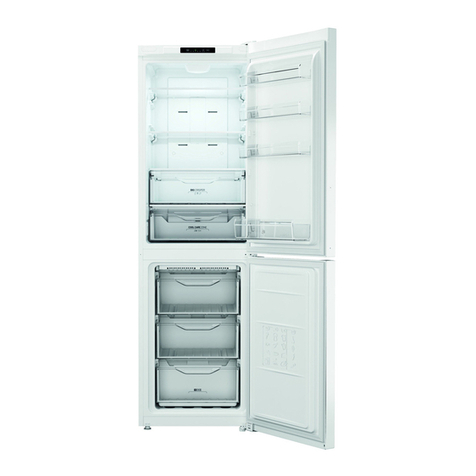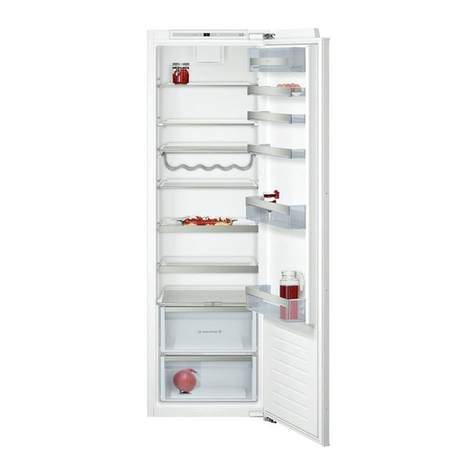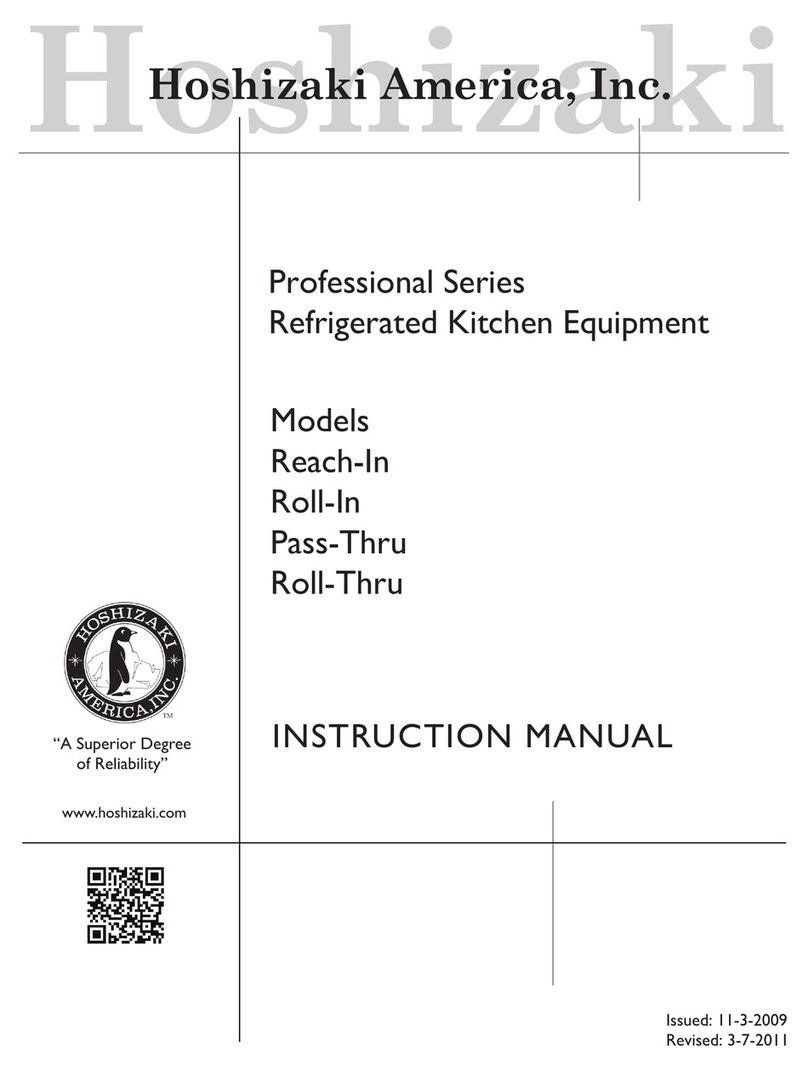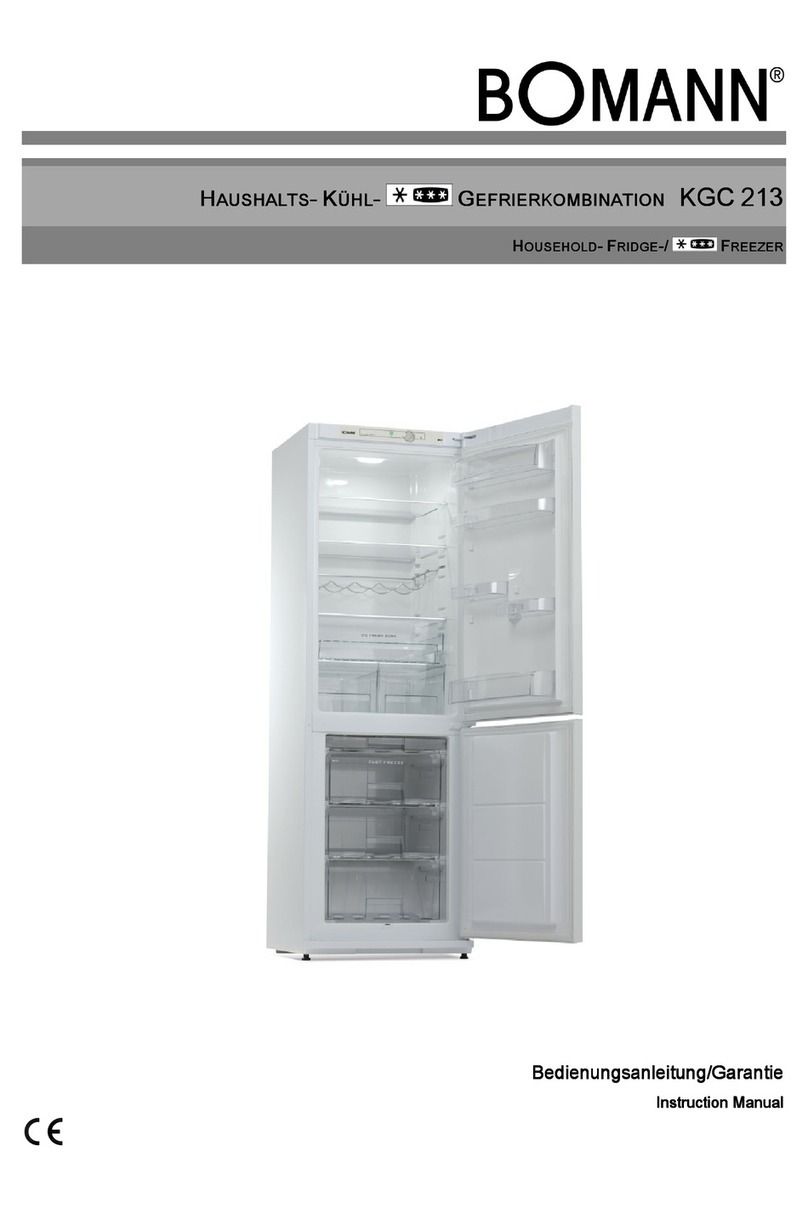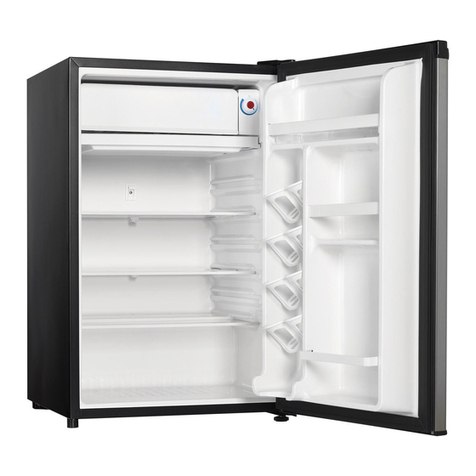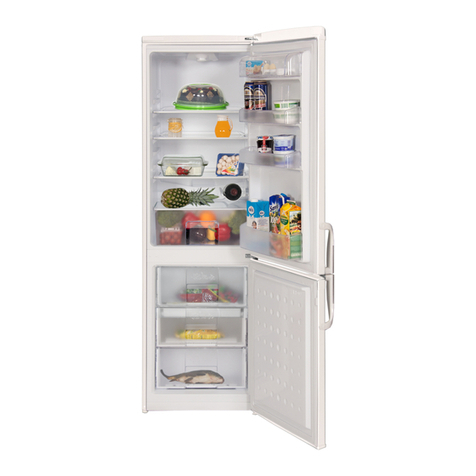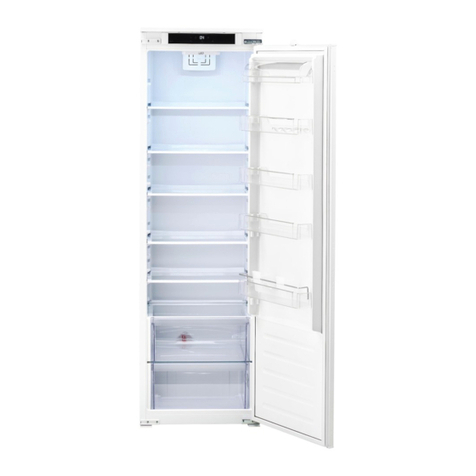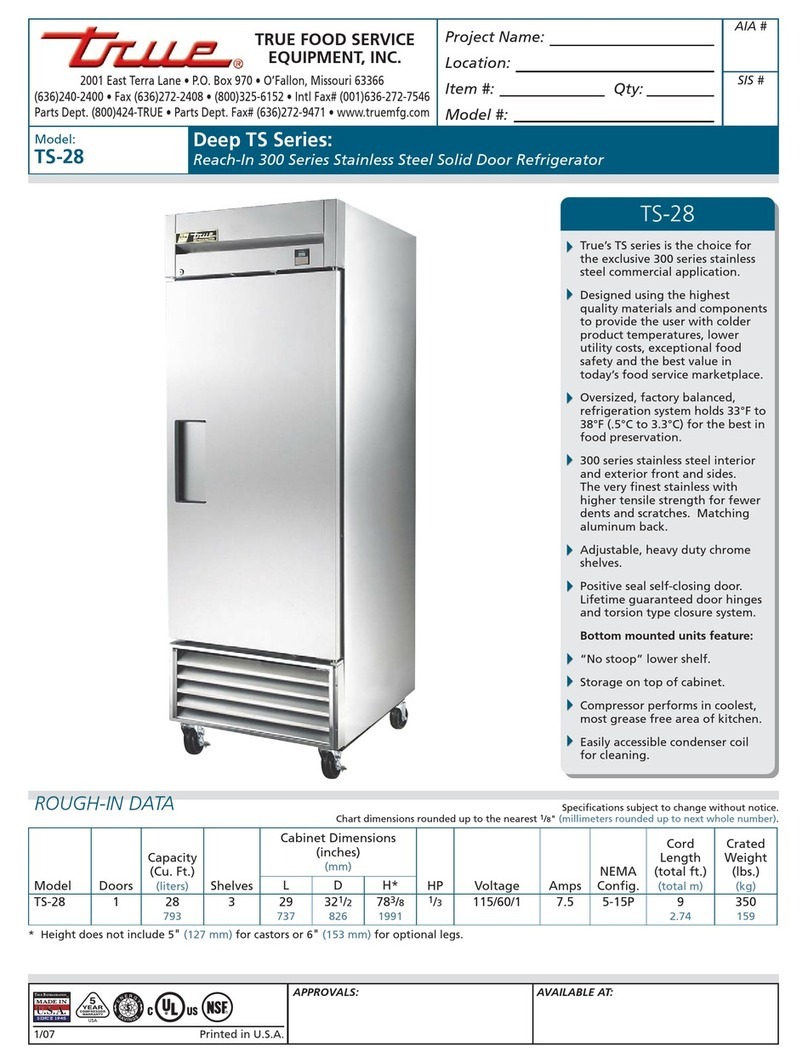Careand cleaningofthe refrigerator.
Cleaning the Outside
The doorhandlesand trim ;on so,hemodels).Clean
with a cloth da,npened with soapy water. Dry with a
soft cloth.
Keepthe outsideclean.Wipe with a clean cloth lightly
da,npened with kitchen appliance wax or mild liquid dish
detergent. DW and polish with a clean,
soft cloth.
Thestainlesssteelpanelsanddoorhandles(on some models)
can be cleaned with a commercially available stainless steel
cleaner. Do not use appliance wax or polish on the stainless
steel.
Donotwipe therefrigeratorwith a soileddishcloth orwet
towel.Thesemayleavea residuethat canerodethe paint.
Donot usescouringpads,powderedcleaners,bleachorcleaners
containingbleachbecausetheseproductscanscratchand
weakenthe paintfinish.
Cleaning the inside
Tohelp preventodors,leave an open box of baking soda in
the fresh flood and freezer co,npart,nents.
Unplugthe refrigeratorbeforecleaning.
If this is not practical, wring excessmoisture out of sponge
or cloth when cleaning around switches, lights or controls.
Use warm water and baking soda solutio,_about a
tablespoon (15 ml) of baking soda to a quart (1 liter)
of water. This both cleans and neutralizes odors. Rinse and
wipe dr?:
After cleaning tile door gaskets, apply a thin layer of
petroleum jelly to the door gaskets at the hinge side. This
helps keep the gaskets fro,n sticking and bending out of
shape.
Avoidcleaningcoldglassshelves(onsomemodels)with hotwater
becausethe extremetemperaturedifferencemaycausethemto
break.Handleglassshelvescarefully.Bumpingtemperedglasscan
causeit to shatter.
Donotwashanyplasticrefrigeratorpartsinthedishwasher.
Condenser
There is no need for routine condenser cleaning in normal
Cleaningthe condenser coils.
home operating enviromnents.
However, in environments that
may be particularly dustT or
greasy, the condenser should
be cleaned periodically for
efficient refrigerator operation.
To clean tile condenser, turn the temperature control dial to
0. Sweep away or vacuum up dust.
For best results, use a brustl specially desig_led for this
purpose. It is available at most appliance parts stores.
Moving the Refrigerator
Be carefifl when moving tile refrigerator away from
the wall. All b_pes of floor coverings can be damaged,
particularly cushioned coverings and those with e,nbossed
SHY_aCeS.
Turn die leveling legs at each front corner of die refrigerator
counterclocl_vise until the rollers support
the refrigeratol: Pttll the refrigerator straight out and return it to
position by pushing it straight hi. Moving
the refrigerator in aside direction may result in damage
to the floor covering or refrigerator.
Whenpushingthe refrigeratorback,makesureyoudon'troll over
thepowercordor icemal<ersupplyline (onsomemodels).
After rolling tile refrigerator back into place, turn tile legs
clockwise until the legs again bear the weight of the
refrigerator.
Light Bulb Replacement
To replace a burned-out bulb, unplug tile refrigerator from
its electrical outlet, unscrew tile bulb when cool and replace
it with an appliance bulb of tile sa,ne or lower wattage.
Turningthecontrolto the0positiondoesnotremovepowerto
the lightcircuit.
Preparing for Vacation
For long vacations or absences, remove flood and unplug tile
refrigerator. Move the te,nperature control dial to the {1
position, and clean the interior with a baking soda solution
of one tablespoon (15 ml) of baking soda to one quart (1
liter) of water. Leave tile doors open.
Move tile feeler arm to tile STOP(up) position and
shut off the water supply to the refrigerator.
If tile teinperature can drop below freezing, have a qualified
servicer drain the water supply syste*ll (O*l so*lle models) to
prevent serious property damage
due to flooding:
Preparing to Move
Secure all loose iteins such as grille, shelves and drawers by
taping the,n securely in place to prevent da,nage.
Besuretherefrigeratorstaysin anuprightpositionduringmoving.
